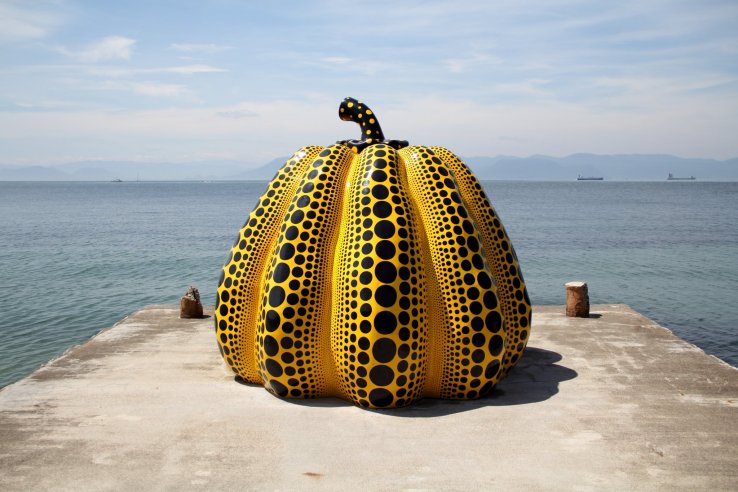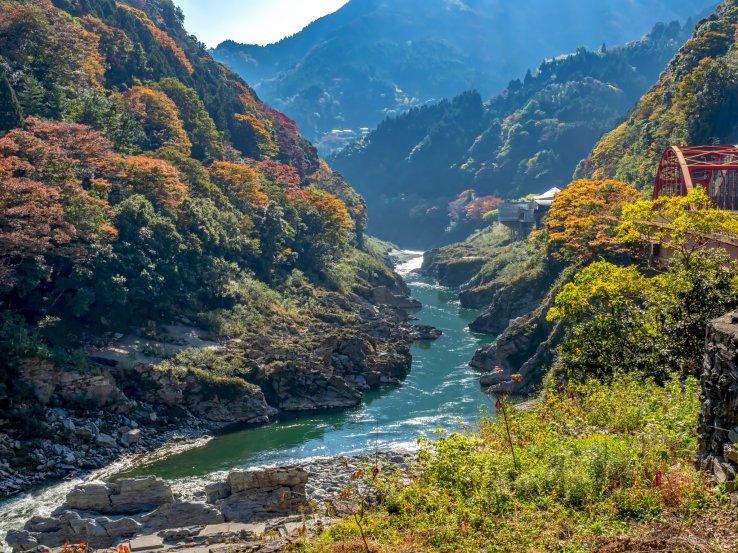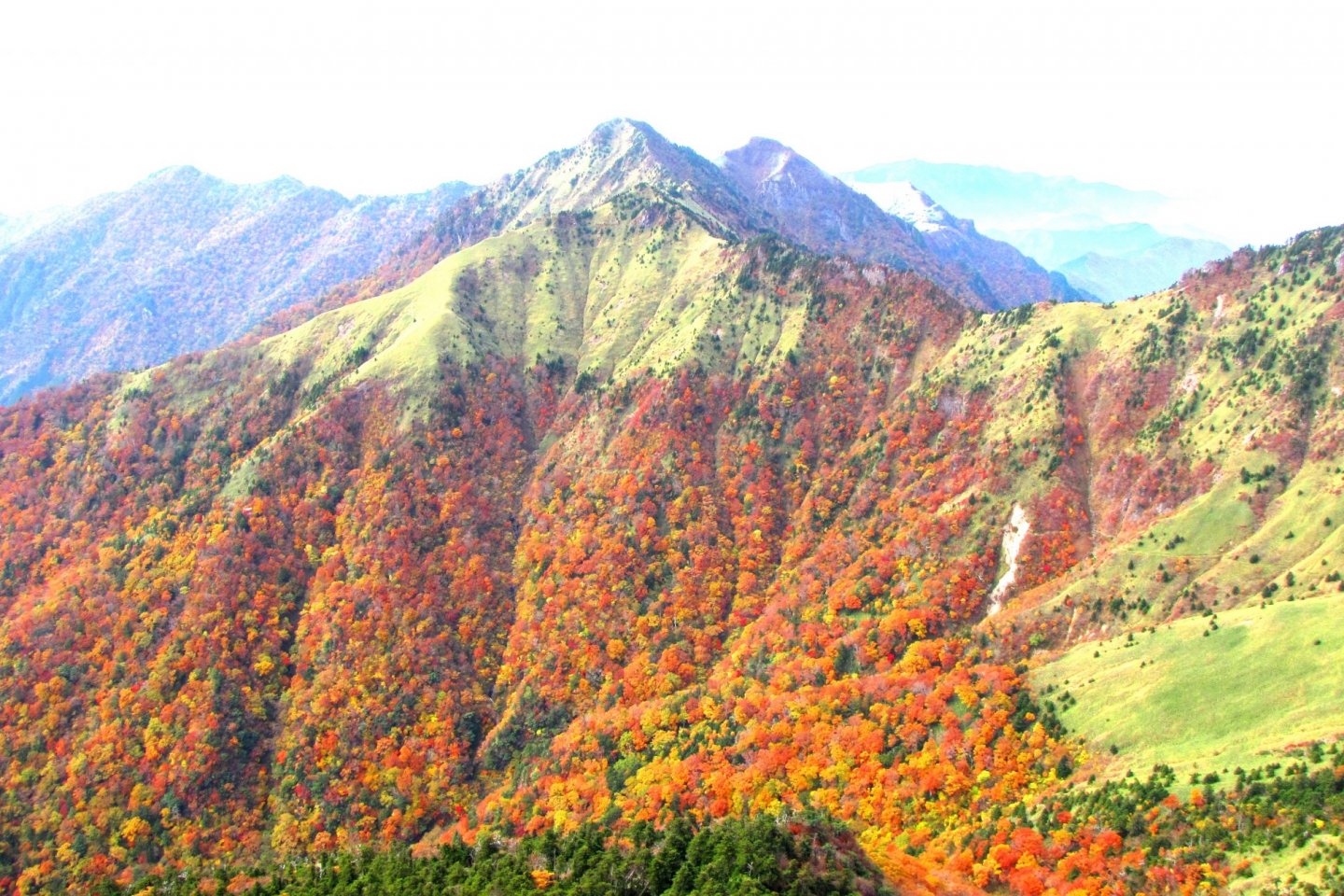Overview
One of the nation's main islands, the region of Shikoku is traditional Japan defined by its natural history and cultural heritage. Sparsely populated, the region's stunningly dramatic landscapes intertwine with pilgrims from around the world who gather here to seek spiritual succour along the famed Shikoku Pilgrimage route. Mountains, rivers and oceans attract outdoor enthusiasts, while traditional dance festivals, modern art and feudal buildings only add to the appeal. Here is a simple guide to each of the four prefectures of Shikoku.
Ehime
Ehime Prefecture's scenic Seto Inland Sea location is highlighted by the Shimanami Kaido connecting it to the mainland. Its rugged interior, featuring western Japan's highest peak in Mt. Ishizuchi, is also home to a third of the famous Shikoku Pilgrimage temples. Japan's oldest hot spring, Dogo Onsen, can be found here along with the idyllic terraced rice fields of Izumidani and Mizuga-ura. Ehime is also home to some of the nation's oldest original castles like Matsuyama and Uwajima.
Ehime is connected to Tokyo via Haneda and Narita Airports or the JR Tokaido-Sanyo Shinkansen to Okayama and from there the Limited Express Shiokaze.

Kagawa
The nation's smallest prefecture, Kagawa Prefecture is a bold expression of the spiritual and the creative. Over a quarter of all of the Shikoku Pilgrimage’s temples can be found here, including the 88th and final one, while Naoshima, with its ocean vistas and landscapes, is internationally recognised as an island of modern art. Kagawa's sanuki udon noodles are now beloved by the nation and overlooking the city atop its massive handmade bulwark is Marugame Castle, one of Japan's original.
Kagawa is connected to Tokyo via Haneda Airport or the JR Tokaido-Sanyo Shinkansen to Okayama and from there the JR Kaisoku Marine Liner.

Kochi
With its rugged mountains and jagged coastline, Kochi Prefecture is known as the 'testing ground' for pilgrims along the Shikoku Pilgrimage. Its Kochi Castle is one of Japan's original castles while another original is Shimanto River, with water so pure, it is said to be the country's last 'fresh stream'. A touch of natural innovation can be found in places Yusuhara while the revolutionary spirit that saw Sakamoto Ryoma help end the Edo period is said to have begun at Katsurahama Beach.
Kochi is connected to Tokyo via Haneda and Narita Airports or the JR Tokaido-Sanyo Shinkansen to Okayama and from there the JR Nanpu limited express.

Tokushima
With its rugged interior and spectacular coastal waters, Tokushima Prefecture is a prefecture like no other. The almost other worldly Iya Valley with its vine rope bridges and isolated nature, is a dramatic contrast to the power of the whirlpools of Naruto. Its famous 4-day Awa Odori traditional dance festival, with an attendance of over one million people, is contrasted with the prefecture being the start of the Shikoku Pilgrimage.
Tokushima is connected to Tokyo via Haneda and Narita Airports or the JR Tokaido-Sanyo Shinkansen to Okayama and from there the JR Kaisoku Marine Liner to Takamatsu and then the Uzushio Express.





























Two very memorable experiences however. First the "Togyu" bull wrestling in Uwajima. I was a bit nervous about this, after all bull fights usually don't end well for the bull. I did know beforehand this was rather different, with two bulls trying to push each other away, but still was pleasantly surprised how much respect there was for the animals. And the only time a bull got wounded the fight was immediately stopped to treat those wounds. This felt decidedly different from the Tosa Dog museum at Katsurahama which I visited the day before: while I didn't see actual fights, those just seem very cruel to me.
The second experience I could almost consider as life changing: my first ever onsen visit! I never cared for those, but when standing in front of Dogo Onsen, there's just no excuse for not going in. And from that moment on, I was hooked...
I have been thinking about a second visit to Shikoku, the Niihama Taiko Matsuri in autumn has been on top of my matsuri-list for quite a few years and I have been thinking about the Shimanami Kaido more than once. But so far I always ended up in other parts of Japan...
(though also busy with some other things...)